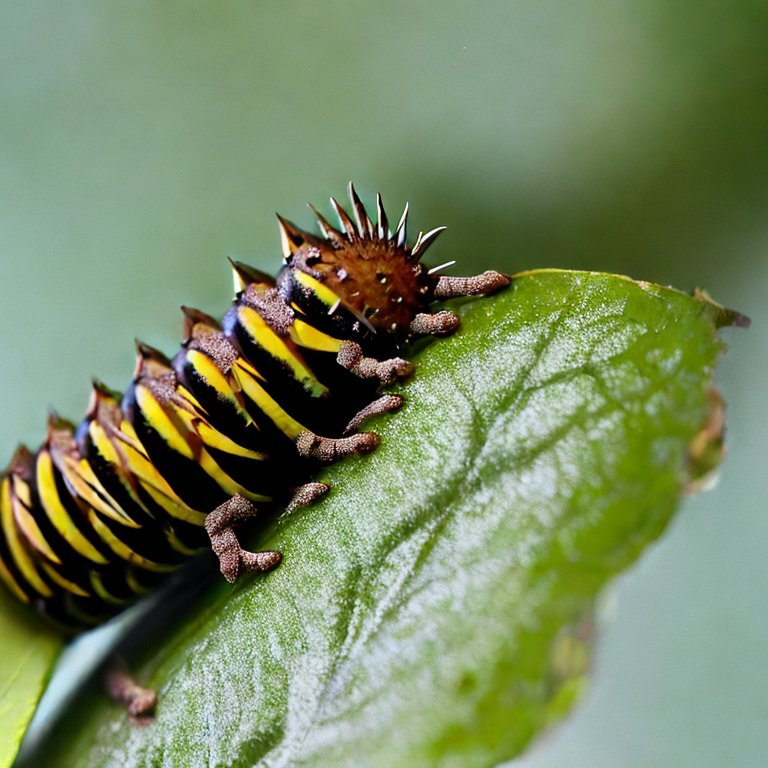
Insects are a diverse group of animals that can be found in virtually every habitat on Earth. While there are many different types of insects, one of the most common food sources for many species is grass.
In this post, we will explore some of the different insects that eat grass.
Contents
- Do Insects Eat Grass?
- Insects that Eat Grass
- List of Insects that Eat Grass
- Benefits of Insects that Eat Grass
Do Insects Eat Grass?
Grass is a staple food for many types of insects, including grasshoppers, crickets, and caterpillars. These insects are known as herbivores, which means that they feed exclusively on plants. The leaves, stems, and seeds of grasses are all rich in nutrients that insects need to survive. (Learn more at Do Insects Eat Grass?)
Insects that Eat Grass
Here are some insects that eat grass:
Grasshoppers
Grasshoppers, for example, feed on the leaves of grasses, using their powerful jaws to chew through the tough plant material. They are able to eat large amounts of grass in a single day, and are often considered to be a pest by farmers and gardeners.
Caterpillars
Caterpillars, on the other hand, feed on the foliage of grasses and other plants. They are known for their voracious appetite, and can quickly defoliate entire fields of grass. However, they are also important food sources for many types of birds and other insects.
Crickets
Crickets, like grasshoppers, also feed on the leaves of grasses. They are usually active at night and are known for their loud chirping, which is produced by rubbing their hind legs together.
Beetles
Many types of beetles, such as chafers and billbugs, feed on the leaves, stems, and roots of grasses. They can cause significant damage to lawns and turf, as well as to crops such as corn, wheat, and rice. (Learn more at Do Beetles Eat Grass?)
Cicada
Cicadas are known for their loud singing and are found in many parts of the world. They feed on the sap of trees and shrubs, but in their nymph stage, they feed on the roots of grasses.
Grass fly larvae
These are the immature stages of certain types of flies that feed on the leaves and stems of grasses. They can cause significant damage to turf and lawns, and are considered to be pests in many parts of the world.
Grass moths
Many types of moths, such as armyworms and cutworms, feed on the leaves and stems of grasses. They can cause significant damage to turf and lawns, as well as to crops such as corn, wheat, and rice.
Grass weevils
These are small, brown or black beetles that feed on the leaves and stems of grasses. They can cause significant damage to turf and lawns, and are considered to be pests in many parts of the world.
True bugs
Certain types of true bugs, such as stink bugs and plant bugs, feed on the leaves and stems of grasses. They can cause significant damage to turf and lawns, as well as to crops such as corn, wheat, and rice.
Mealybugs
Mealybugs are small, sap-sucking insects that feed on the sap of grasses and other plants. They can cause significant damage to turf and lawns, as well as to crops such as corn, wheat, and rice.
Scale insects
Scale insects are small, sap-sucking insects that feed on the sap of grasses and other plants. They can cause significant damage to turf and lawns, as well as to crops such as corn, wheat, and rice.
Whiteflies
Whiteflies are small, winged insects that feed on the sap of grasses and other plants. They can cause significant damage to turf and lawns, as well as to crops such as corn, wheat, and rice.
List of Insects that Eat Grass
- Grasshoppers
- Caterpillars
- Crickets
- Aphids
- Beetles (such as chafers and billbugs)
- Cicadas
- Grass fly larvae
- Grass moths
- Grass weevils
- Armyworms
- Cutworms
- True bugs (such as stink bugs and plant bugs)
- Mealybugs
- Scale insects
- Whiteflies
Please note that this is not an exhaustive list and there may be other insects that feed on grass as well.
Benefits of Insects that Eat Grass
Grass is a widespread and abundant food source for many insects, and can be found in virtually every habitat on Earth.
Insects play an important role in the ecosystem by helping to break down plant material and recycle nutrients. As they feed on grass, they help to break down the plant material and make it available to other animals. They also help to pollinate plants, which is essential for the reproduction of many species.
Overall, insects are an essential part of the food chain for many animals and play a vital role in the ecosystem. Their feeding habits on grass is just one of the many ways they contribute to the balance of life on Earth.
Lance has been passionate about the plant-based diet and we have been following a whole food plant-based diet for over 5 years. We focus on health, natural healing, weight management, animal rights, and the health of the planet and environment by focusing on whole plant-based foods and sustainable practices.
Learn more at the About Me page and follow on social media at the links below.





